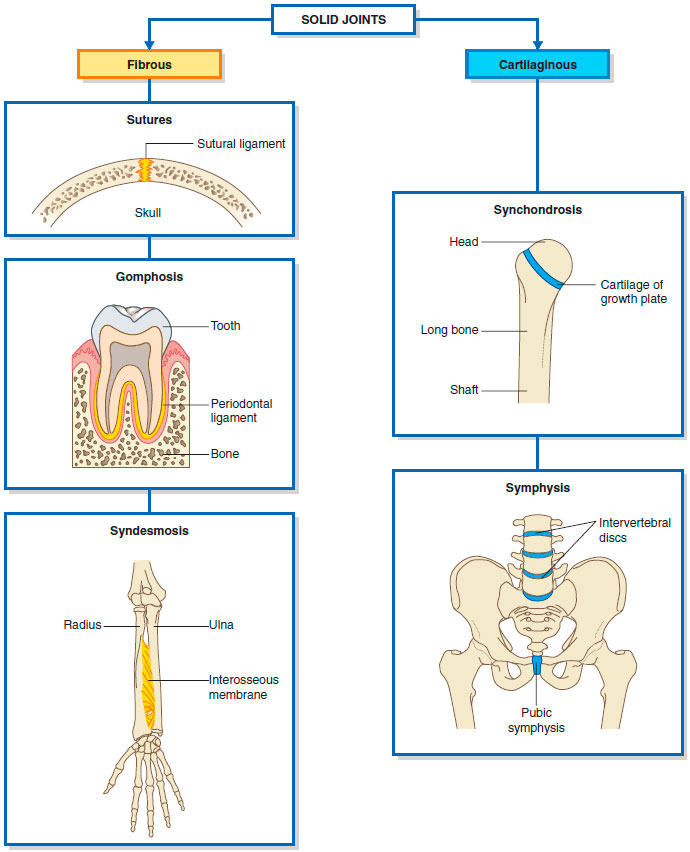A Comprehensive Review of Solid Joints
This comprehensive article explores the two main types of solid joints: fibrous and cartilaginous. It elaborates on how these joints, including sutures, gomphoses, syndesmoses, synchondroses, and symphyses, provide rigidity and strength to the human skeletal system. Furthermore, the article describes their functions, the different bones they connect, and their roles in supporting body structure and withstanding stress. It offers valuable insights for those interested in orthopedics, physiotherapy, and the complexity of the human skeletal system.

Solid Joints
Solid joints, also known as fibrous and cartilaginous joints, play a crucial role in our body’s structural integrity and stability. These joints involve connections between skeletal elements where the adjacent surfaces are held together either by fibrous connective tissue or by cartilage, usually fibrocartilage. While they provide less mobility compared to synovial joints, their primary function is to provide stability and withstand stress, rather than allow a wide range of motion.
Understanding Fibrous Joints
Fibrous joints, as the name suggests, are bound together by fibrous connective tissue. These joints are characterized by their limited mobility, which is integral to maintaining the skeletal structure’s rigidity and strength. Fibrous joints can be further categorized into sutures, gomphoses, and syndesmoses, each with its unique characteristics and functions.
Sutures
Sutures are fibrous joints that occur solely in the skull. Here, adjacent bones are linked by a thin layer of connective tissue known as a sutural ligament. The suture joints in the skull are critical as they allow the bones to grow in unison during the developmental years, later fusing completely to form a protective casing for the brain.
Gomphoses
Gomphoses are fibrous joints that exist only between the teeth and the jawbone. These joints feature short collagen tissue fibers running between the tooth’s root and the bony socket within the periodontal ligament. They provide stability to the teeth and ensure they do not shift or move within the oral cavity.
Syndesmoses
Syndesmoses are joints where adjacent bones are linked by a ligament, an example being the ligamentum flavum connecting adjacent vertebral laminae. Another instance is the interosseous membrane linking the radius and ulna in the forearm. These joints offer stability and a small amount of rotation or translation along the longitudinal axis of the bones involved.

Unfolding Cartilaginous Joints
Cartilaginous joints are the type where two separate bones are interconnected by cartilage, either hyaline or fibrocartilage. Like fibrous joints, they offer limited movement, providing more structural support and stability than mobility. They can be further classified into synchondroses and symphyses.
Synchondroses
Synchondroses are cartilaginous joints that occur where two ossification centers in a developing bone remain separated by a layer of cartilage. A prominent example is the growth plate found between the head and the shaft of long bones in children and adolescents. These joints enable bone growth and, over time, become completely ossified, turning into a solid, immobile joint.
Symphyses
Symphyses are where two separate bones are connected by a cartilaginous pad or disk. These joints mostly occur in the midline and include the pubic symphysis (between the two pelvic bones) and the intervertebral discs (between adjacent vertebrae). They allow limited movement while providing strong connections that can withstand great amounts of pressure and tension.
In summary, solid joints, while offering less mobility compared to synovial joints, are integral to our body’s structural strength and stability. Understanding the complexity of these joints is essential in the fields of orthopedics and physiotherapy, helping medical practitioners develop better treatment plans and preventive measures for joint-related issues.











